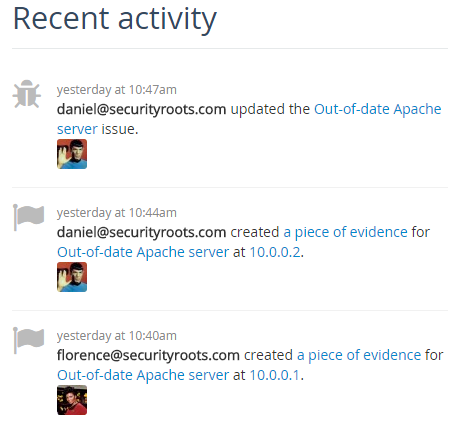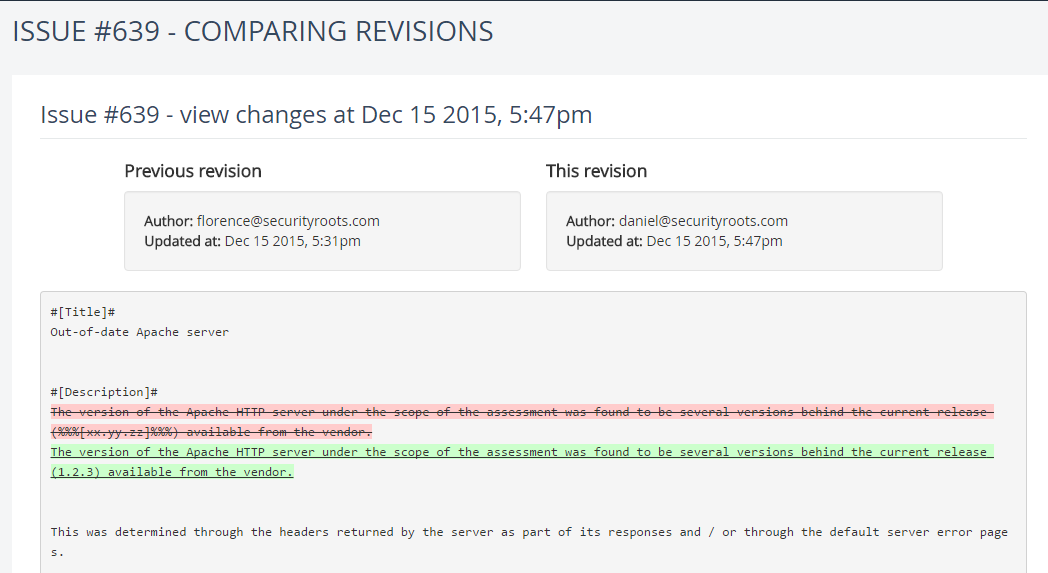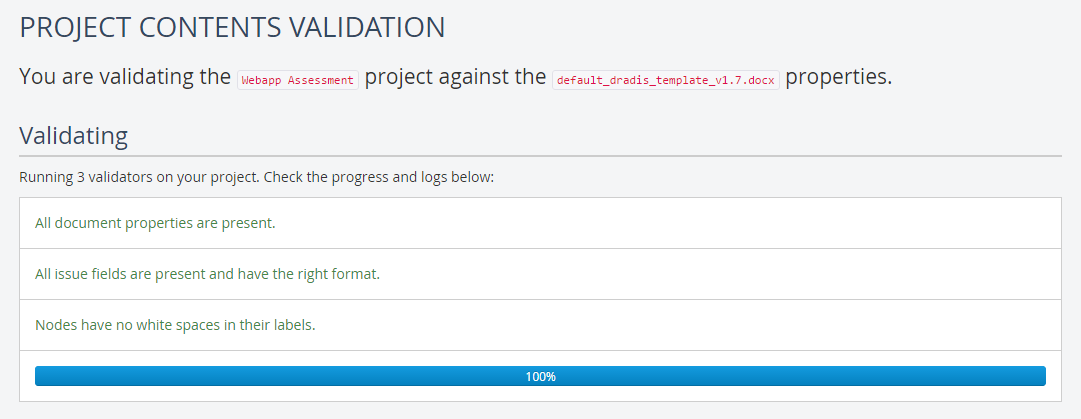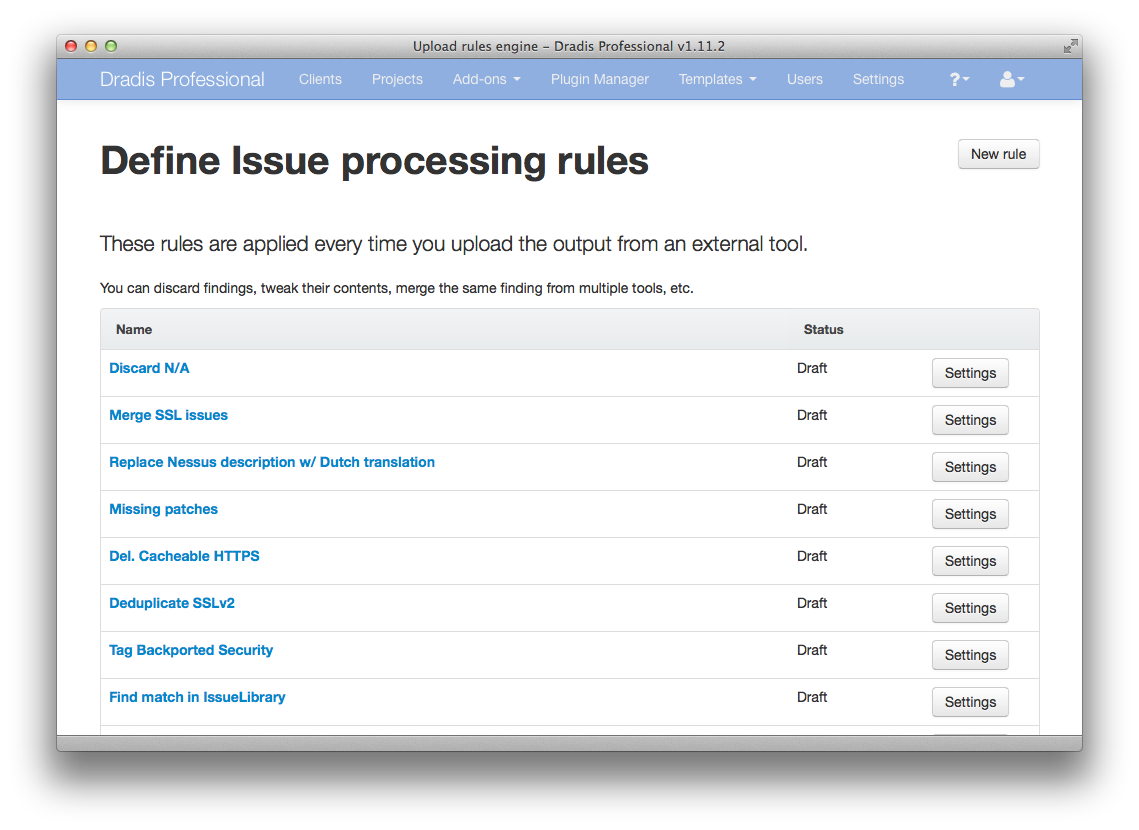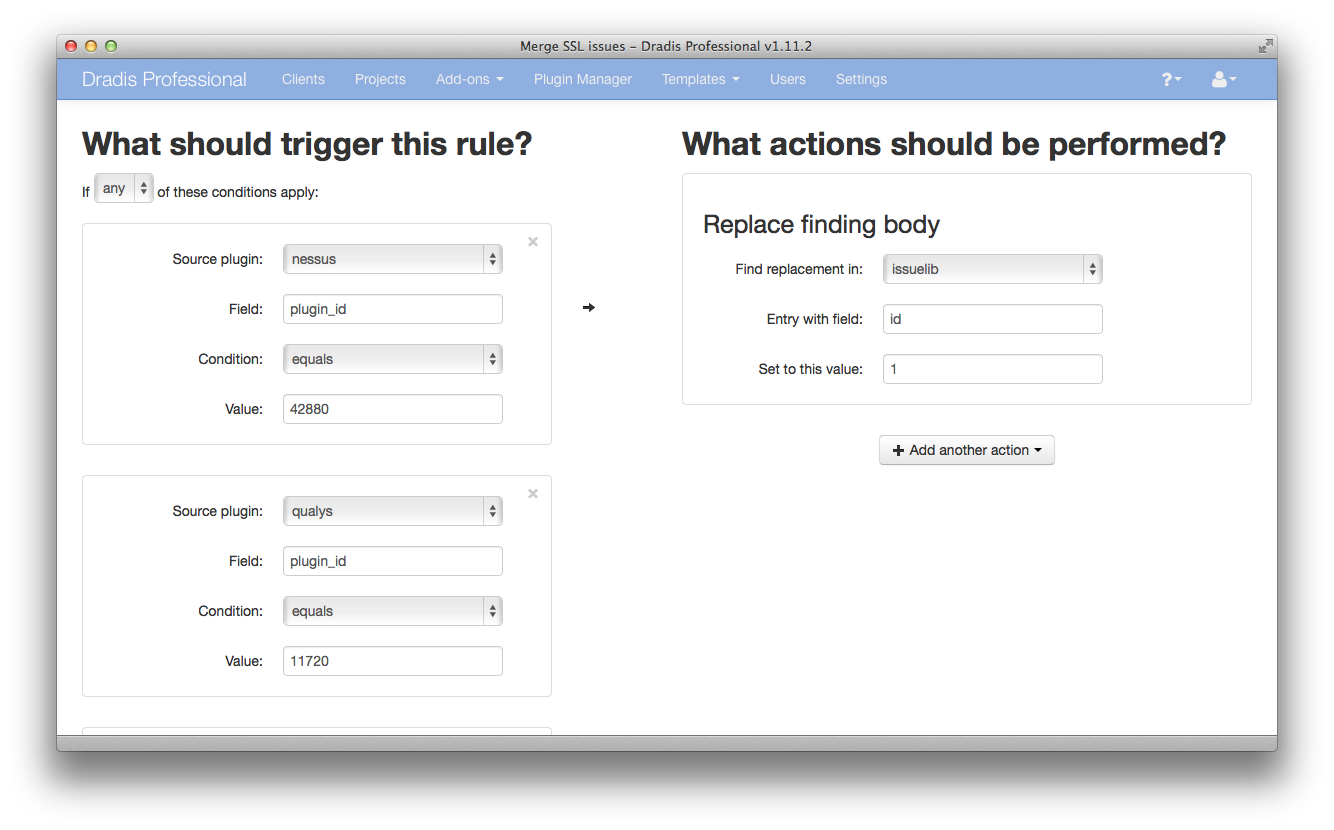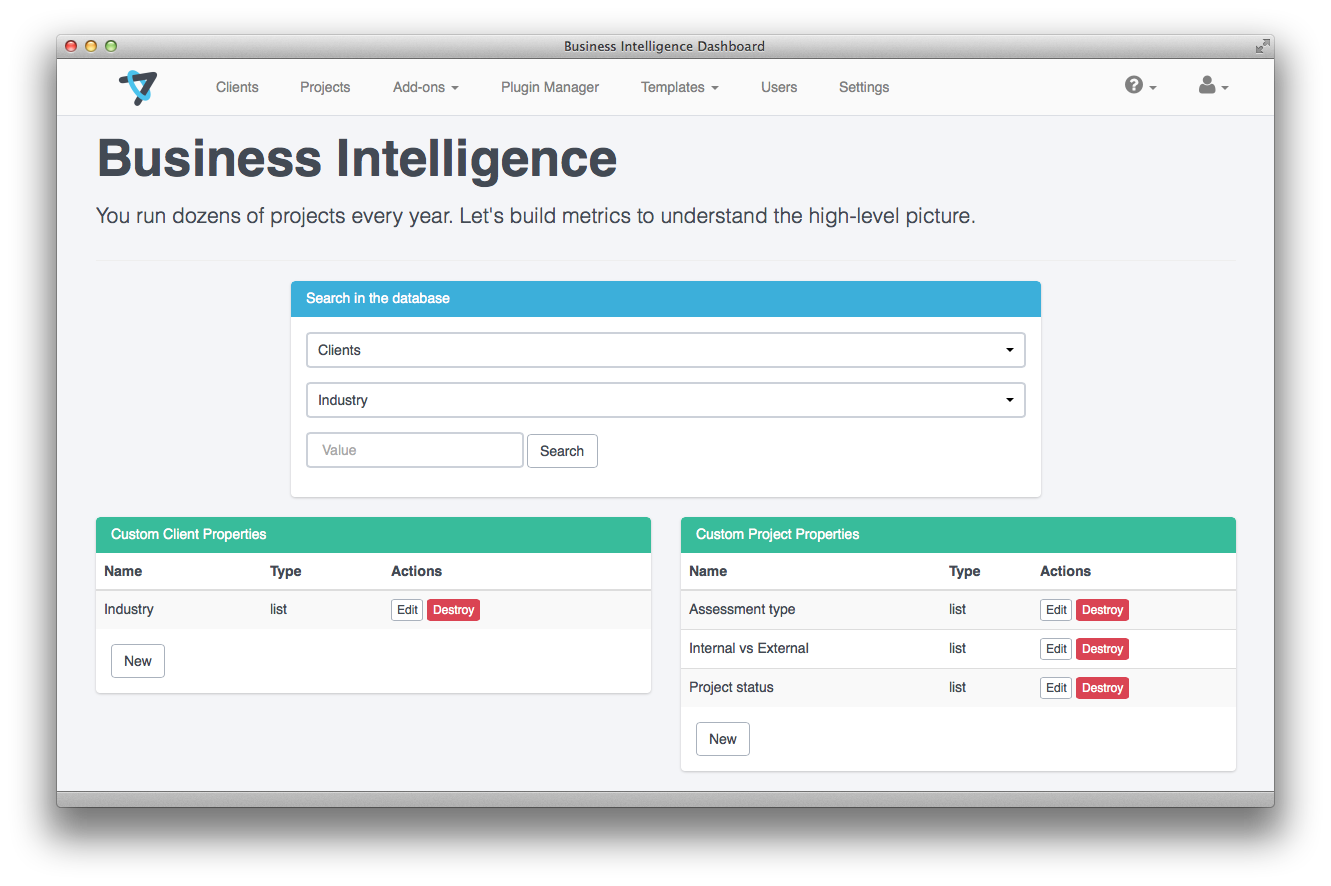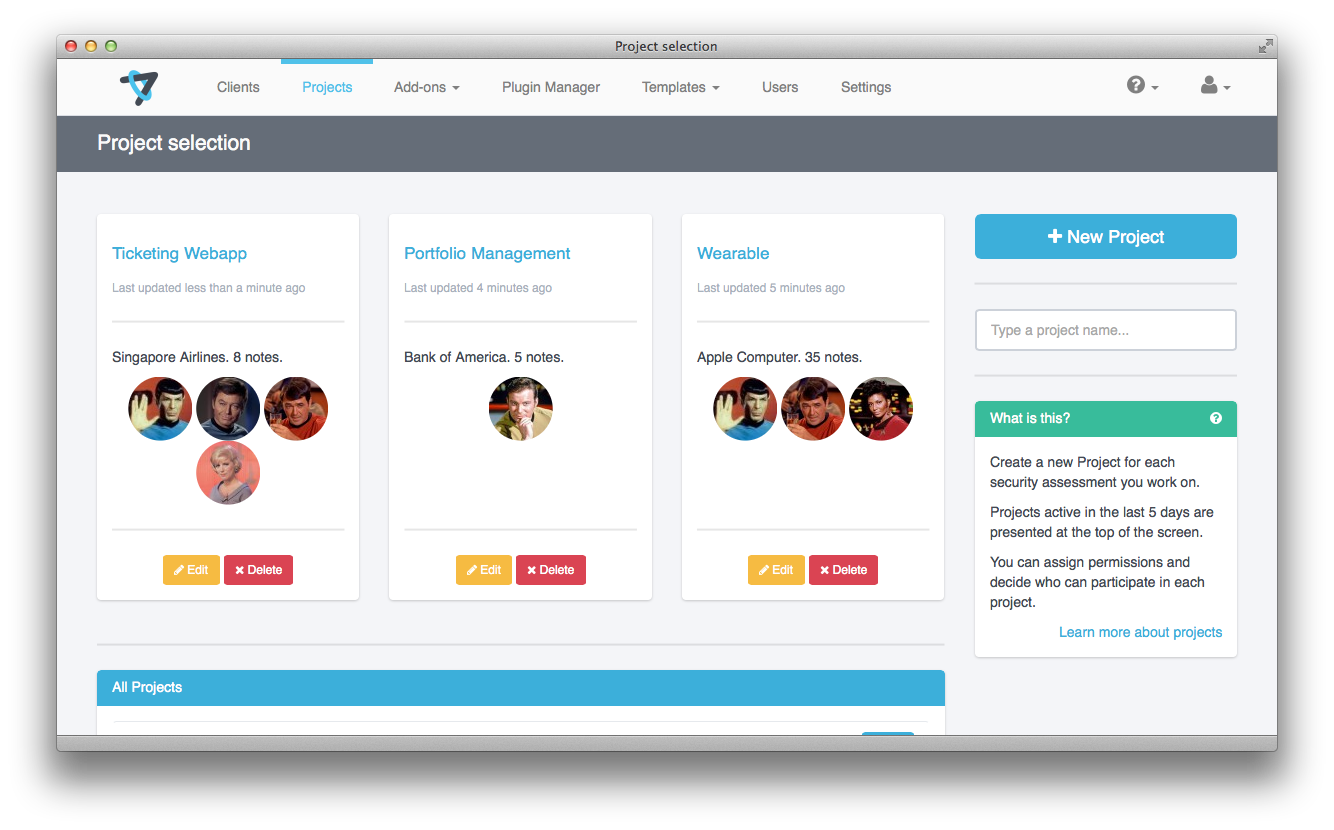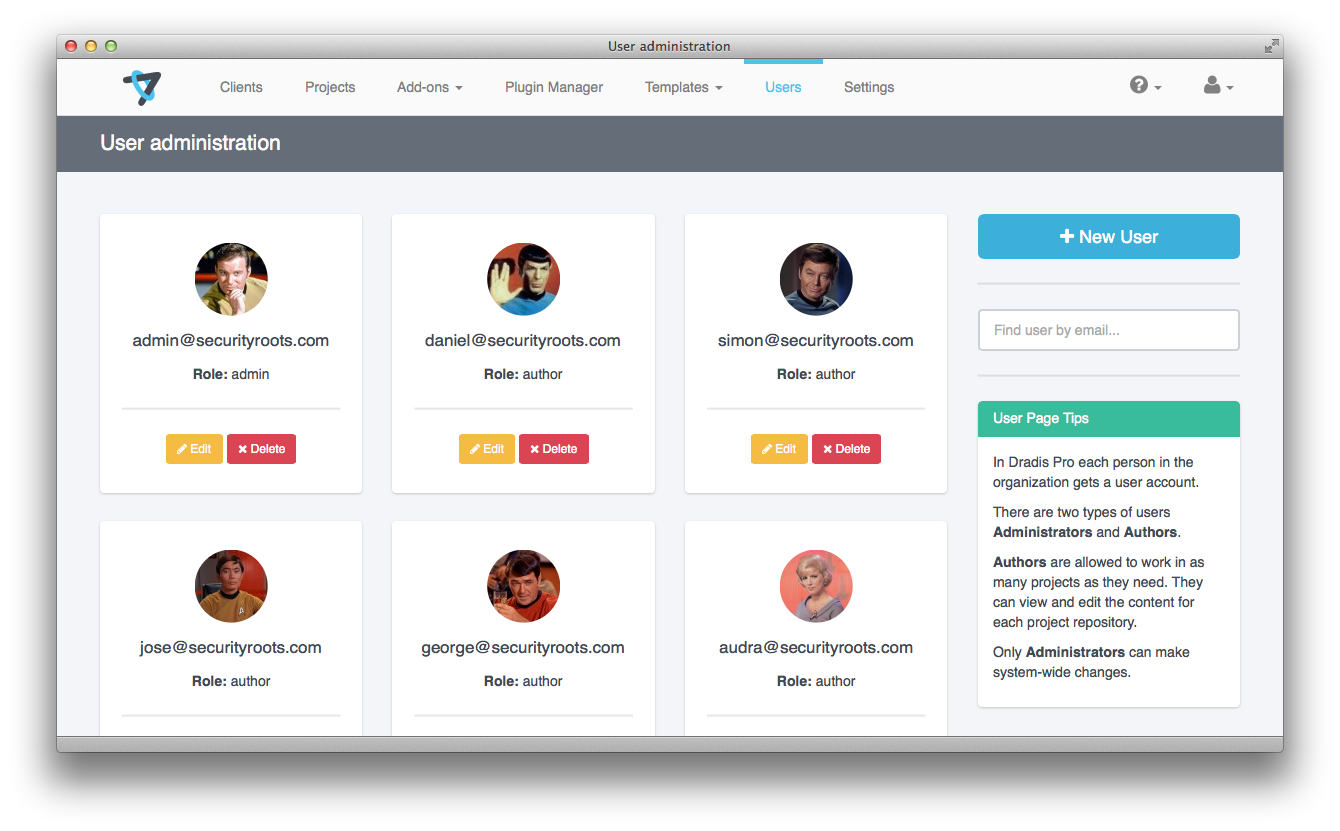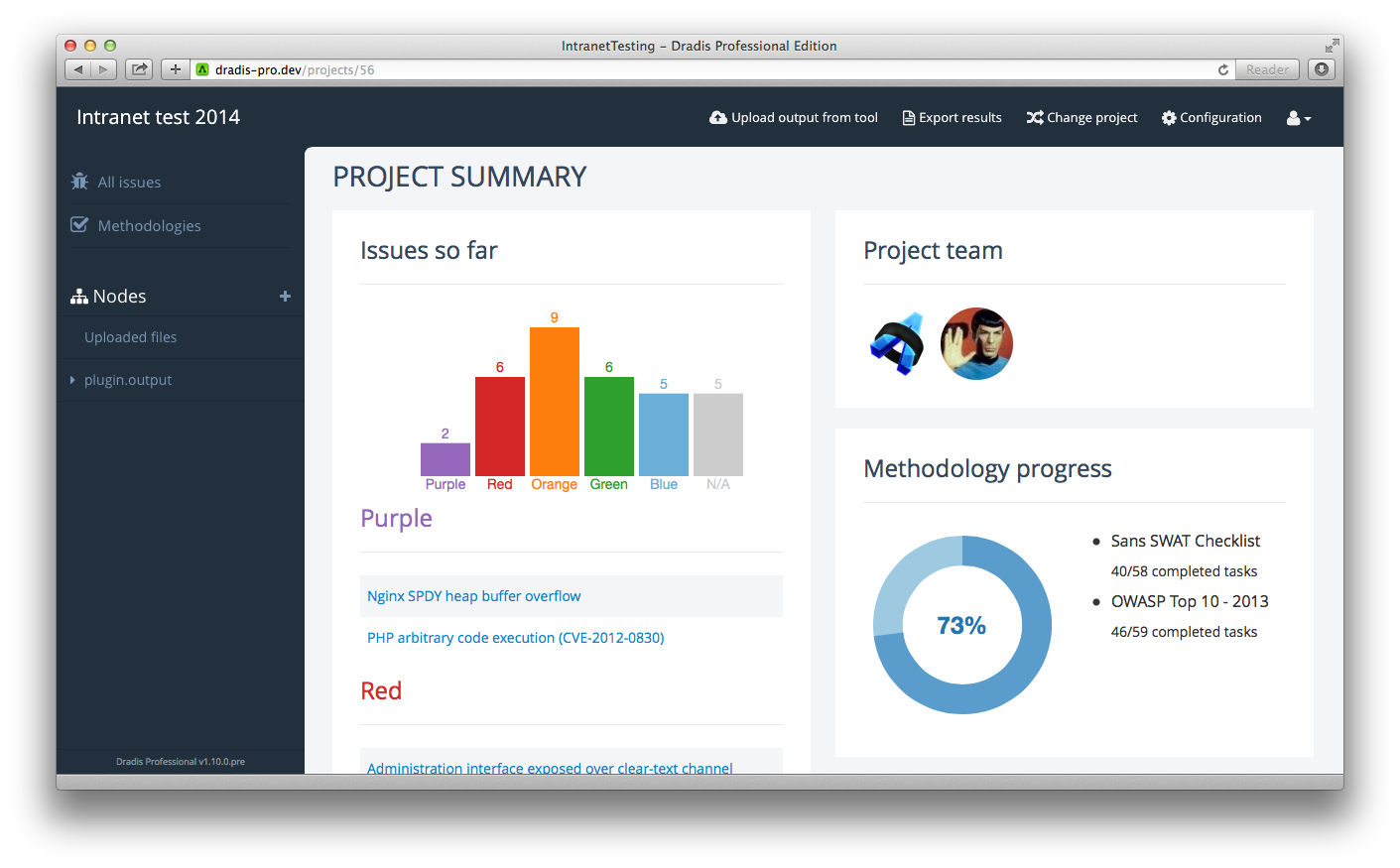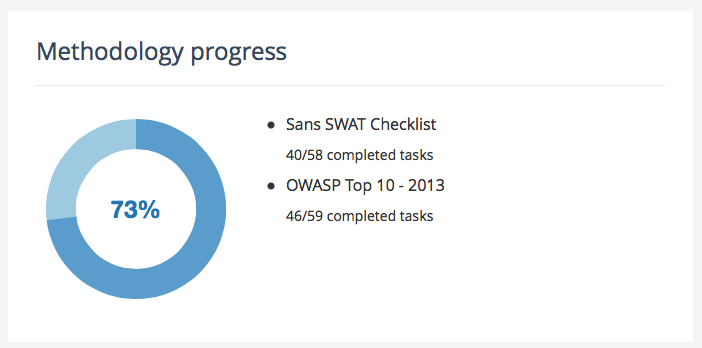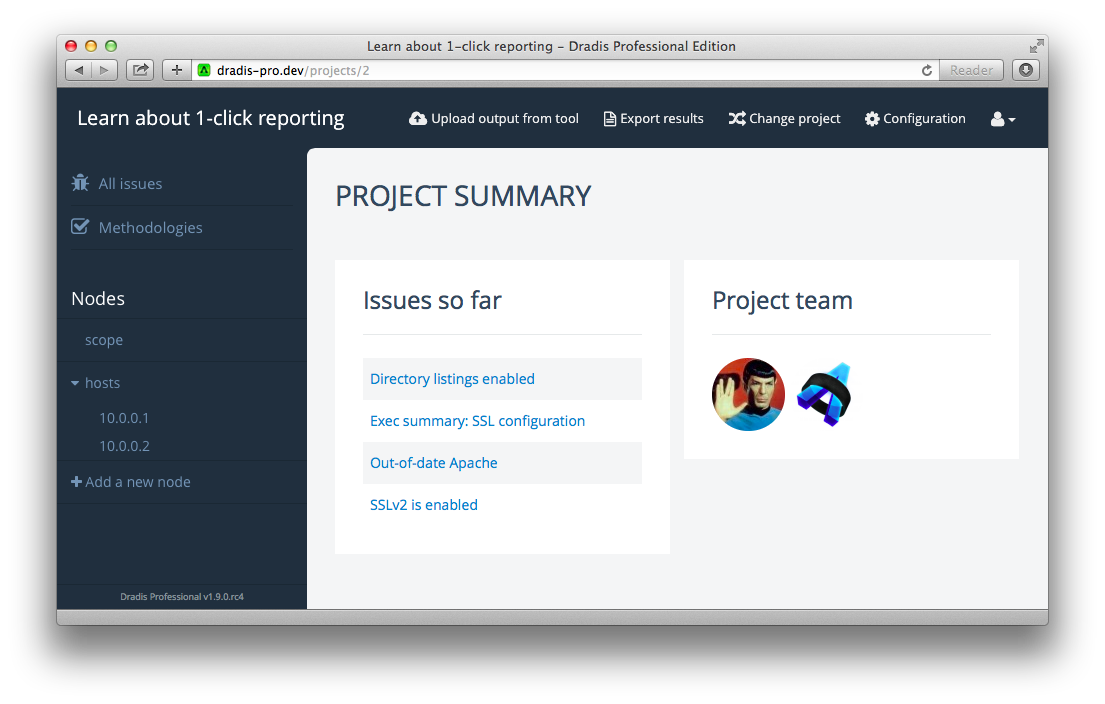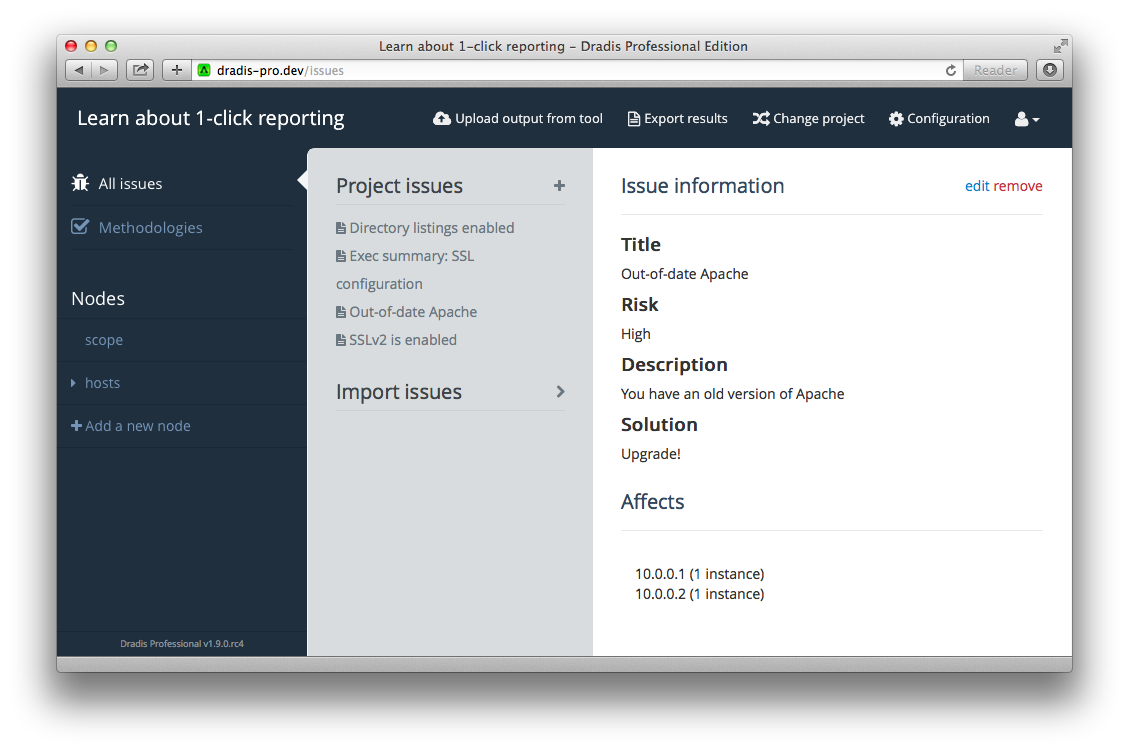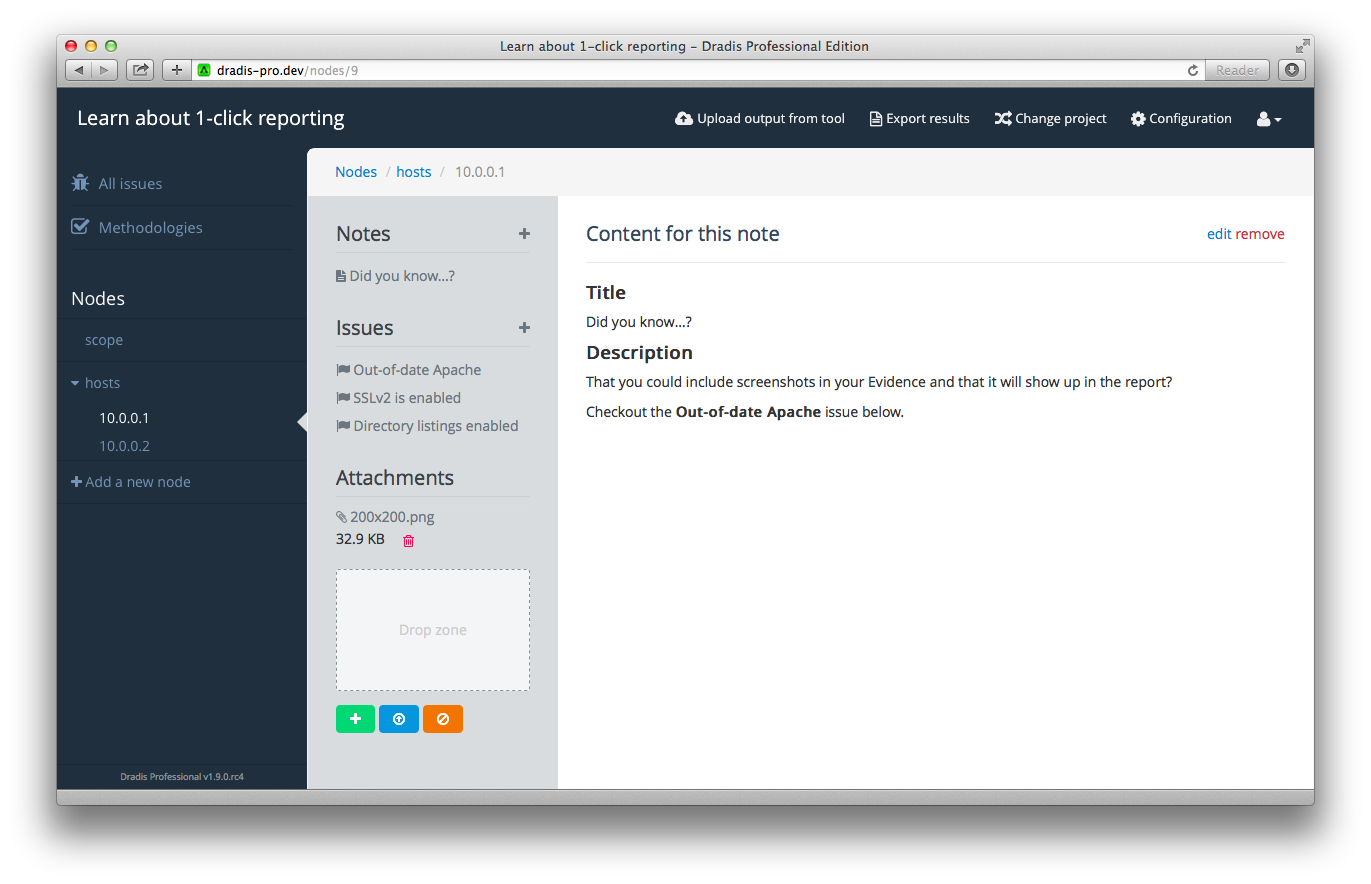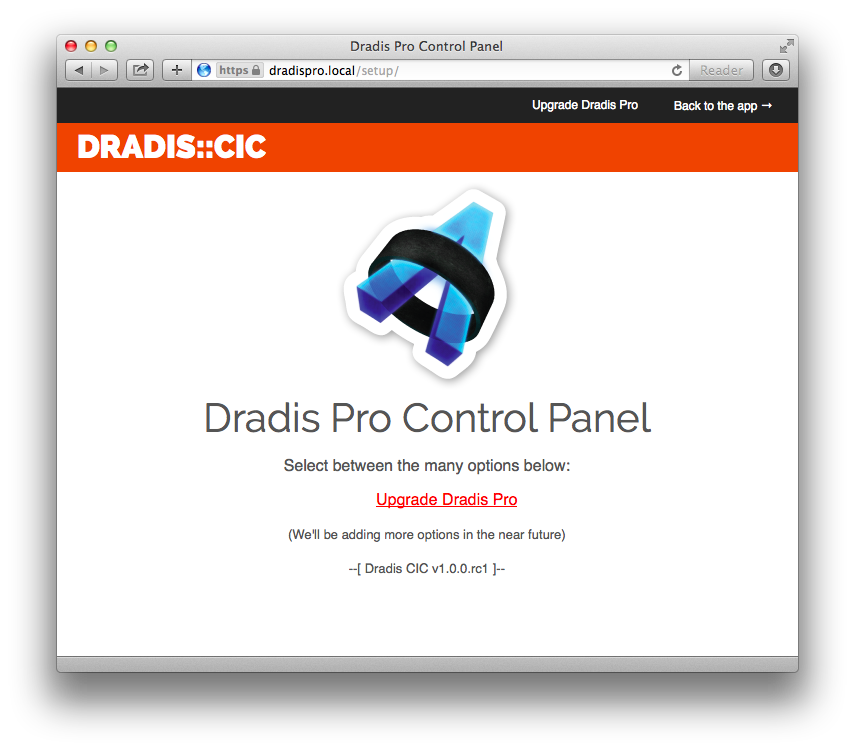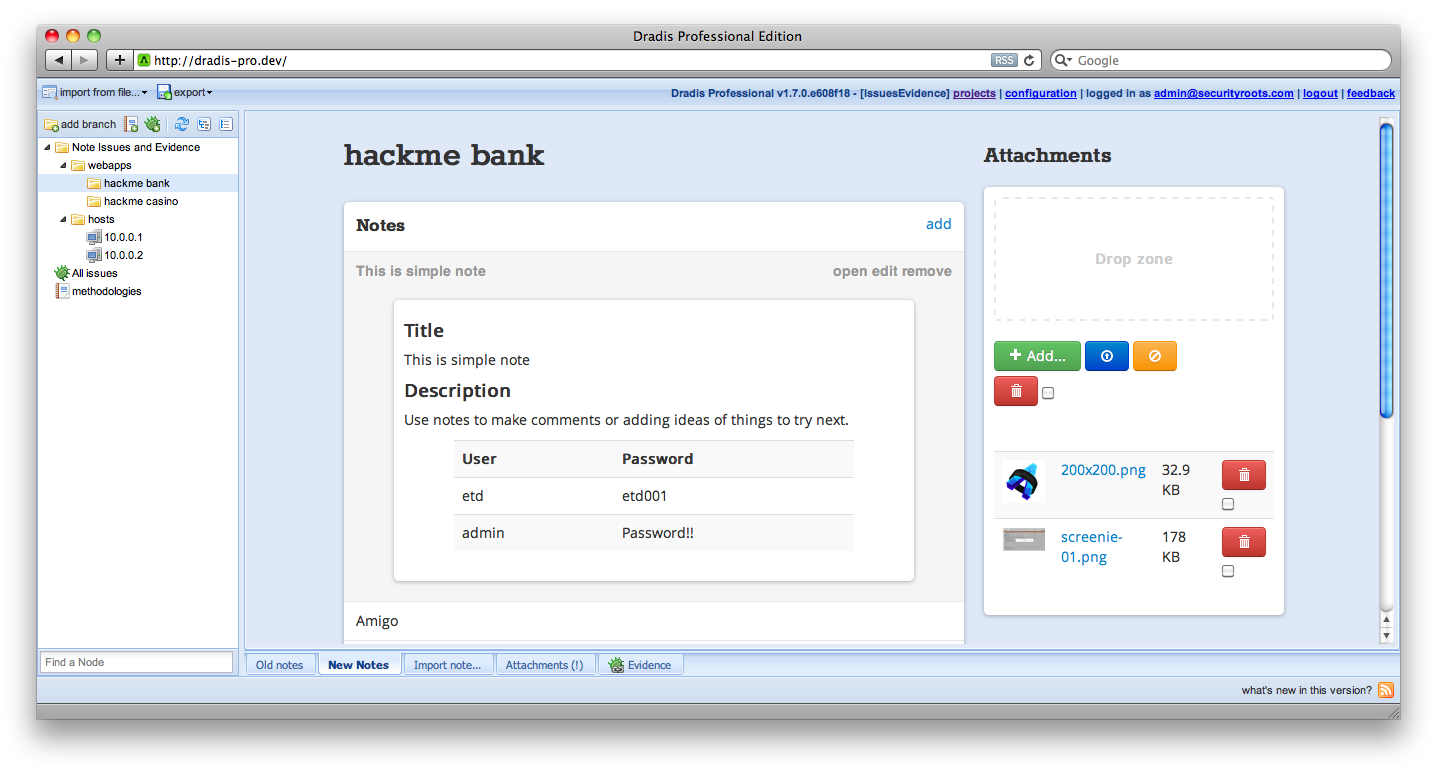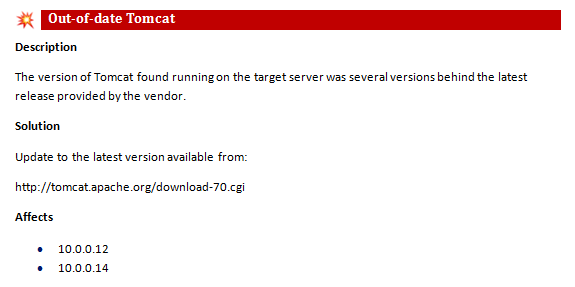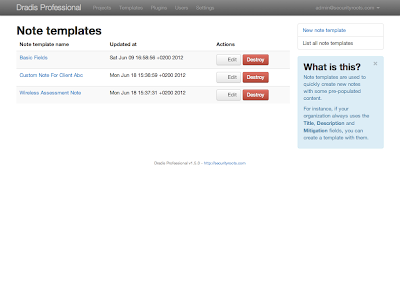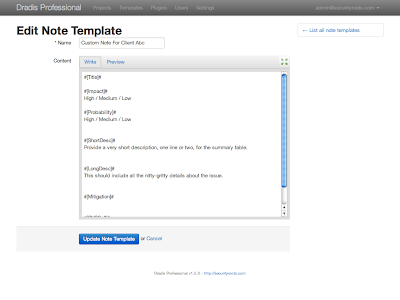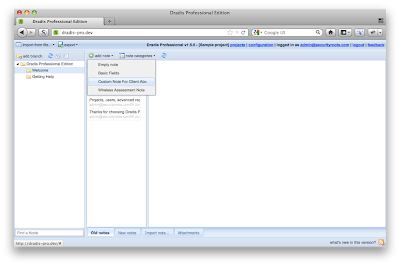Dradis Professional Edition is a collaboration and automated reporting tool for information security teams.
Just in time for the new year a fresh release of Dradis Pro is out of the oven. We’re really excited about Dradis Pro v2.0 as it is going to allow you to have a much better understanding of what is going on in all your security assessments.
The highlights:
- Activity Feed: see what others are doing (see below)
- Content revisions: track and *diff* edits (see below)
- REST API: Clients and Projects
- New Change Value action for the Rules Engine
- Open support ticket from the app
- Better issue Tagging support
- Scheduled DB cleanup
- DB performance enhancements
- New add-ons
- Brakeman Rails security
- Metasploit Framework
- Word reports
- Better handling of screenshots
- Pre-export validator (see below)
- Add .docx / .docm support CLI generation
- Report template properties (see below)
- Plugin enhancements:
- Acunetix issue identification accuracy
- LDAP integration
- NMap CLI bug fixed
- NTOSpider additional data gathering
- NTOSpider Plugin Manager bug fix
- Qualys port and protocol information
- Security fixes
Bugs fixed: #223, #301, #303, #307b
Dradis v2.0 video summary
The most juicy features in a 1m32s video:
The Activity Feed
The new Activity Feed is displayed on every view of the project. It lets you see who has been working on what (and when).
In the Project Summary page, the feed looks like this:
There is an Activity Feed for issues, evidence, notes and nodes, so nothing will slip through the cracks.
Versioned content
In addition to knowing who did what and when, we’ve taken it one step further: it is now possible to view and compare the changes that were introduced in any piece of content during the lifetime of the project:
Report template properties and pre-export validator
Finally a handy feature on the reporting front. Since Dradis doesn’t force you to change the way you write your report, we don’t make any assumptions about how you want to work (trivia fact: Dradis has been used by over 200 teams in 32 countries and dozens of languages). As a result some times there is a small discrepancy between the content in your Dradis project and what your report template is expecting.
For example, say you use High, Medium and Low for risk rating. Maybe in one of the issues somebody made a typo and used Hihg instead of the appropriate spelling. Or say that your template is expecting you to define properties for Project name and Client point of contact but your forgot? Fear not, the new pre-export validator is here to help!
So far we’ve got the following checks, but we’re already working in the next batch:
How to upgrade to Dradis Pro v2.0?
Just head over to the release page and follow the instructions:
https://portal.securityroots.com/releases/latest
Still not a Dradis user?
These are some of the benefits you’re missing out:
- Automated reports, generate the same reports your clients know and love in a fraction of the time.
- Combine the output from 19+ different tools into a single report.
- Deliver consistent results. Never forget any steps. Always know what has been covered and what is still ahead.
- Everyone on the same page: all information available across the team.
- Dradis Professional is reliable, up-to-date and with comes with quality support
Read more about Dradis Pro’s time-saving features, what our users are saying, or if you want to start from the beginning, read the the 1-page summary.

